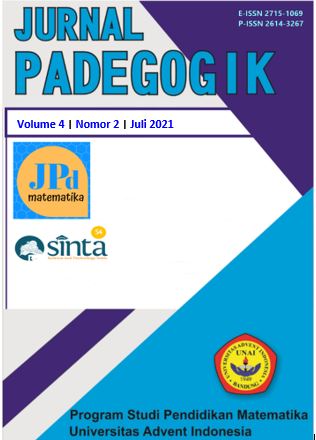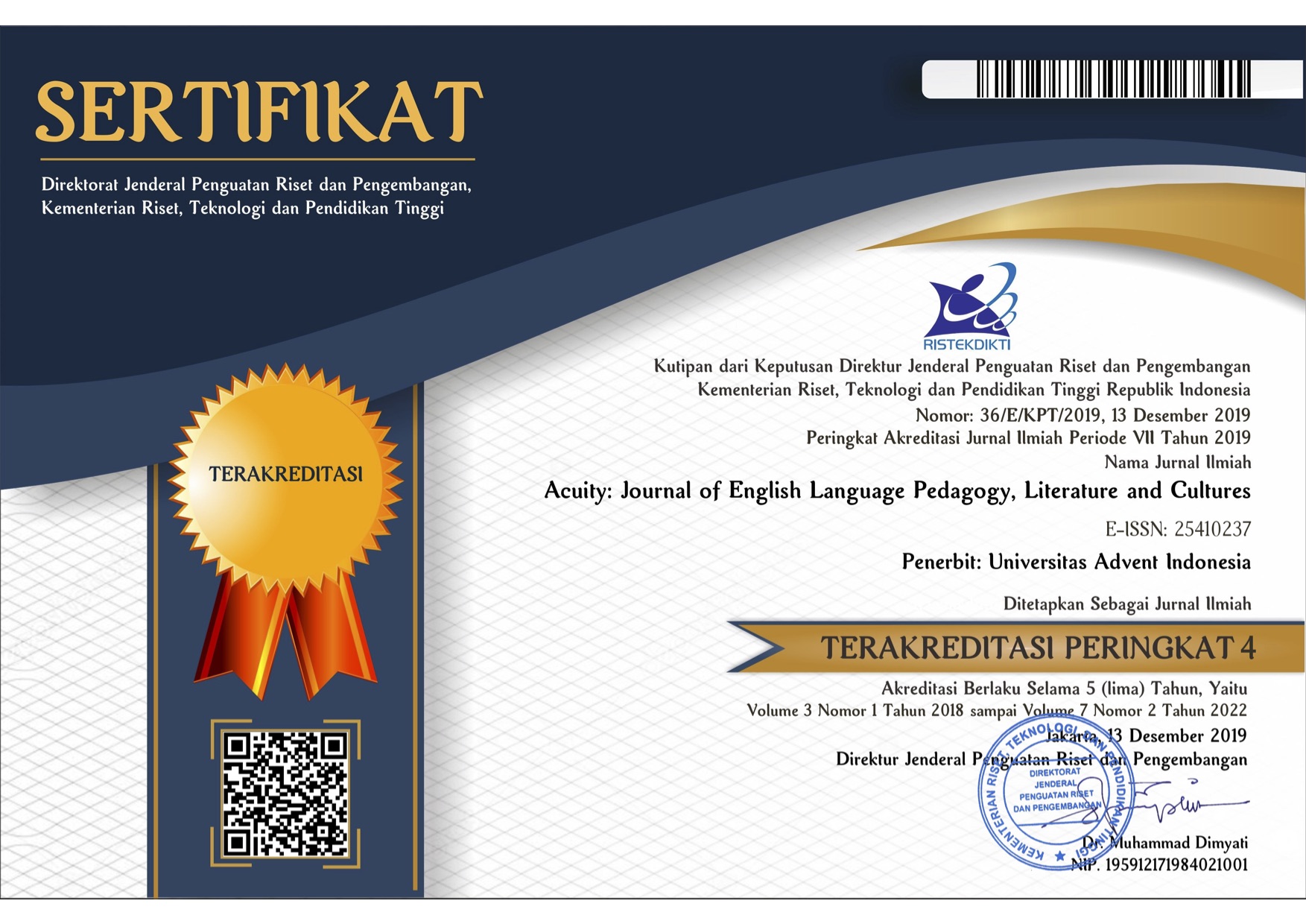Students' Misconceptions in Mathematical Induction Using Certainty of Response Index (CRI)
Keywords:
certainty of response index, Students’ misconceptions, mathematical inductionAbstract
Misconception is something that can hinder the acceptance of new material and affect success in solving mathematical problems. This study aims to identify misconceptions in mathematics education students who are prospective mathematics teachers. Identifying and finding solutions to this misconception is very important because it can help improve student learning outcomes. The research method used is descriptive qualitative method using diagnostic tests and interviews. The diagnostic test was conducted on 28 mathematics education students using an instrument in the form of structured essay questions. Students are asked to answer questions with the right steps, then fill out a CRI questionnaire to measure the level of confidence in the answer. The results showed that there were half of all students who experienced misconceptions when doing proof by mathematical induction. There are 3 types of misconceptions experienced by students, namely: algebraic concept errors, misconceptions in the basic steps related to series, and algebraic calculation errors. The largest percentage are algebraic misconceptions.
Downloads
References
Anggara, B. (2020). Pengembangan Soal Higher Order Thinking Skills sebagai Tes Diagnostik Miskonsepsi Matematis Siswa SMA. ALGORITMA Journal of Mathematics Education (AJME), 2(2), 176-191, http://dx.doi.org/10.15408/ajme.v2i2.18387.
Bartle, R. G., & Sherbert, D. R. (2011). Introduction to Real Analysis 4th Edition. New Jersey: JohnWiley & Sons, Inc.
Booth, J., & Koedinger, K. R. (2008). Key misconceptions in algebraic problem solving. Proceedings of the 30th Annual Cognitive Science Society (pp. 571-576). Austin, TX: Cognitive Science Society.
Creswell, J. W. (2014). Research design: Qualitative, quantitative, and mixed methods approaches. London: Sage Publications.
Dzulfikar, A., & Vitantri, C. A. (2017). Miskonsepsi Matematika pada Guru Sekolah Dasar. Suska Journal of Mathematics Education, 3(1), 41-48.
Even, R. (2011). The relevance of advanced mathematics studies to expertise in secondary school mathematics teaching: Practitioner’s views. ZDM—The International Journal of Mathematics Education, 43(6–7), 941–950, https://doi.org/10.1007/s11858-011-0346-1.
Fitria, A. (2014). Miskonsepsi Mahasiswa dalam Menentukan Grup pada Struktur Aljabar Menggunakan Certainty Of Response Index (Cri) di Jurusan Pendidikan Matematika IAIN Antasari. JPM IAIN Antasari, 1(2), 45-60.
Hasan, S., Bagayoko, D., & Kelley, E. (1999). Misconceptions and the Certainty of Response Index (CRI). Physics Education, 34(5), 294-299, https://doi.org/10.1088/0031-9120/34/5/304.
Lucariello, J., Tine, M. T., & Ganley, C. M. (2014). A formative assessment of students’ algebraic variable misconceptions. The Journal of Mathematical Behavior, 33, 30-41, https://doi.org/10.1016/j.jmathb.2013.09.001.
Makonye , J. (2015). Understanding of grade 10 learner errors and misconceptions in elementary algebra. Journal of Educational Studies, 14(1), 288-313.
McDonald, B. (2010). Mathematical Misconceptions. Republic of Moldova: Lambert Academic Publishing.
Miles, M. B., Huberman, A. M., & Saldana, J. (2013). Qualitative data analysis: A methods sourcebook. London: Sage Publications.
Permata, D., Wijayanti, P., & Masriyah. (2019). Students’ misconceptions on the algebraic prerequisites concept: operation of integer numbers and fractions. The Sixth Seminar Nasional Pendidikan Matematika Universitas Ahmad Dahlan. Yogyakarta: IOP Publishing.
Prastyo, H. (2020). Kemampuan Matematika Siswa Indonesia Berdasarkan TIMSS. Jurnal Padegogik, 3(2), 111-117, https://doi.org/10.35974/jpd.v3i2.2367.
Putri, R. N., Suryaningrum, I., & Suyudi, A. (2017). Identifikasi Miskonsepsi Mahasiswa Fisika pada Konsep Osilasi Pegas-Massa Menggunakan Certainty of Response Index (CRI). JRPF(Jurnal Riset Pendidikan Fisika), 2(2), 67-73.
Rochmad, Kharis, M., & Agoestanto, A. (2018). Keterkaitan Miskonsepsi dan Berpikir Kritis Aljabaris Mahasiswa S1 Pendidikan Matematika. PRISMA, Prosiding Seminar Nasional Matematika (pp. 216-224). Semarang: Universitas Negeri Semarang.
Sani, R. A., Manurung, S. R., Suswanto, H., & Sudiran. (2018). Penelitian Pendidikan. Tangerang: TSmart.
Smolleck, L., & Hershberger, V. (2011). Playing with Science: An Investigation of Young Children’s Science Conceptions and Misconceptions. Current Issues in Education, 14(1).
Utomo, D. P., & Huda, M. (2020). Pemahaman Relasional Analisis Proses Pembuktian Menggunakan Induksi Matematika. Yogyakarta: CV. Bildung Nusantara.
Walida, S. E., & Hasana, S. N. (2020). The Identification of Students’ Misconceptions in Mathematical Induction. Journal of Education and Learning Mathematics Research (JELMaR), 1(2), 50-57, https://doi.org/10.37303/jelmar.v1i2.28.
Wulandari, F., & Rakhmawati, R. (2019). Analisis Kemampuan Pemahaman Relasional Matematis : Dampak Strategi Pembelajaran Index Card Match. Desimal: Jurnal Matematika, 2(3), 203-209, https://doi.org/10.24042/djm.v2i3.4291.

Downloads
Published
How to Cite
Issue
Section
License
Copyright (c) 2021 Jurnal Padegogik

This work is licensed under a Creative Commons Attribution-NonCommercial-ShareAlike 4.0 International License.
The submitting author warrants that
- The submission is original and that she/he is the author of the submission together with the named co-authors; to the extend the submission incorporates text passages, figures, data, or other material from the work of others, the submitting author has obtained any necessary permission.
- Articles in this journal are published under the Creative Commons Share-Alike Attribution Licence (CC-BY-SA What does this mean?). This is to get more legal certainty about what readers can do with published articles, and thus a wider dissemination and archiving, which in turn makes publishing with this journal more valuable for you, the authors.
- By submitting an article the author grants to this journal the non-exclusive right to publish it. The author retains the copyright and the publishing rights for his article without any restrictions.







